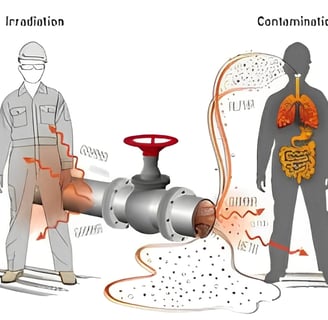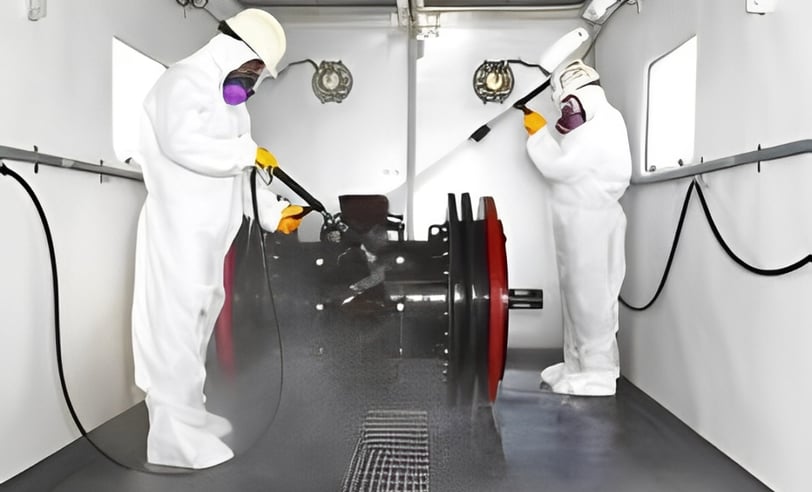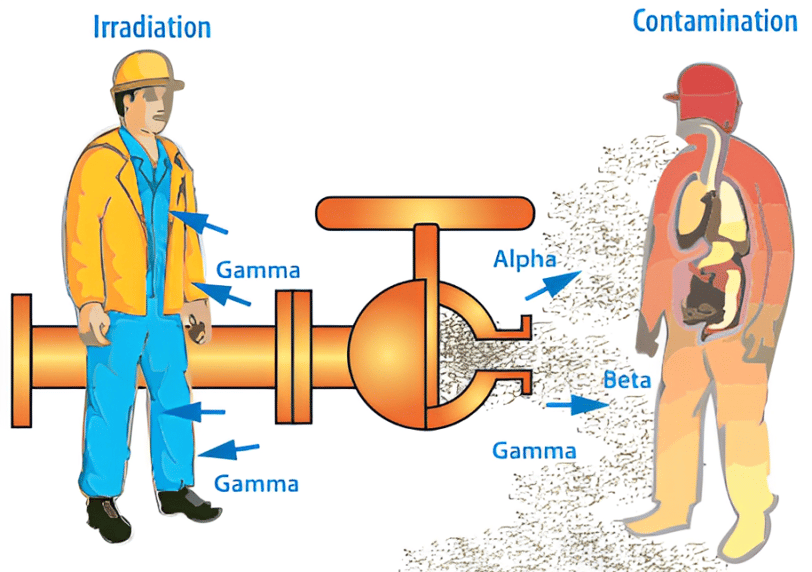NORM Contamination: The Phantom Menace of Mining, Oil, and Gas Operations
We're always made to listen about pollution, wastage, and harmful chemicals, but there exists a threat which does not catch our attention quite so rightfully due to its rather underwhelming manner of presentation—Naturally Occurring Radioactive Materials, or NORM. This phantom threat is creeping its way into mining, oil, and gas operations quietly, unnoticed, and now it's time we exposed its growing perils.
2/14/20253 min read


1. So, What is NORM?
NORM refers to naturally occurring radioactive materials like uranium, thorium, and radon and naturally occurring radioactive material within the earth's crust. The materials are not harmful when they are present in small quantities but become a health hazard once they have been originally mobilized by industries like oil, gas, and mining. The hazard is already there as soon as the radioactive substance has been transported to the surface from where their effects may come down on man's human capital and environment.
2. How Does NORM Enter Mining, Oil, and Gas?
Mining: The largest point of entry by which NORM enters the environment is mining. When we bring minerals, coal, or uranium up to the earth's surface, we are bringing radioactive content with us. In the case of coal mining, for example, the colorless and odorless by-product radon gas can escape into the air and present an enormous health hazard to miners as well as neighboring communities.
Oil and Gas Production: NORM can also take place in oil and gas reservoirs. Throughout the drilling activity for oil or gas, traces of uranium and thorium are created and mobilized to the surface along with other unwanted substances like drill cuttings and produced water. These can pollute the equipment as well as the environment if it is not dumped correctly.
Environmental Impact: NORM does not vaporize into the air upon release. It contaminates the ground, water, and air. Even as radon gas, it leaks into houses, a quiet disease menace.
The impact of NORM contamination has an extended reach, from the immediate surroundings to the public's health.
3. The Health Hazards of NORM Exposure
NORM is an intangible risk but a tangible health hazard. It is riskiest for gas workers, oil workers, and miners but not exclusive to their category.
Cancer: Cancer risk is greatly enhanced because of the long-term exposure to NORM, especially lung cancer because of radon gas inhalation. Skin cancer and bone cancers are also at risk because of radiation exposure.
Breathing Disorders: Inhaling radon gas or radioactive dust results in extremely acute breathing disorders like chronic obstructive pulmonary disease (COPD), forcing the workers to inhale and exhale with great difficulty and leading to long-term illness.
Genetic Damage: NORM ionizing energy produces genetic modification that not only harms the person exposed but his/her children, even his/her grandchildren, and leads to irreversible damage to subsequent generations.
4. How Do We Put an End to NORM in Its Tracks?
We don't need to fight NORM contamination behind the scenes. There are several ways we can protect workers, the environment, and communities from this toxic threat.
Continuous Monitoring: We monitor radiation in the air, water, and soil continuously from time to time such that we can detect NORM contamination at the early stage. The sooner we find it, the sooner we will be able to act to salvage the workers and environment.
Safety Laws Compliance: There are strict safety laws like the International Atomic Energy Agency (IAEA) for radiation exposure that govern organizations. Organizations have to follow such laws in order to facilitate risk minimization and provide a safety net to employees.
The employees should be trained in a way that they understand what the risks from exposure to NORM are. Through protective gear and training, we can restrict exposure to radiation and can provide protection to everyone.
Wastes Disposal: The disposal of radioactive waste is the most hazardous. If we pack and dispose of the waste material properly, then NORM will not contaminate the environment and hence will not increase the risk.
Tech to the Rescue: That's where it happens! Technology, including the MIN-X hand-held X-ray machine, is making detection of NORM contamination more accessible. The portable, hand-held device offers a simple way for workers' access to easily measure radiation levels in real-time, easily identify potentially hazardous areas and respond to them immediately.
5. The Power of the MIN-X Handheld X-ray Machine
MIN-X field X-ray unit is the sole warrior in the fight against NORM contamination. MIN-X is handheld, light, and portable but powered to allow one to screen field radiation without exposing himself or herself to an unsafe exposure site before the event happens. MIN-X combines convenience, ease of use, and technology to effectively address NORM solutions.




Reference Website Link:
1. Sources of NORM in Industrial Operations
https://www.epa.gov/radiation/tenorm-oil-and-gas-production-wastes?utm_source=chatgpt.com
2. Mining Industry
https://en.wikipedia.org/wiki/Naturally_occurring_radioactive_material?utm_source=chatgpt.com
3. Health and Environmental Risks
https://www.epa.gov/radiation/tenorm-oil-and-gas-production-wastes?utm_source=chatgpt.com
